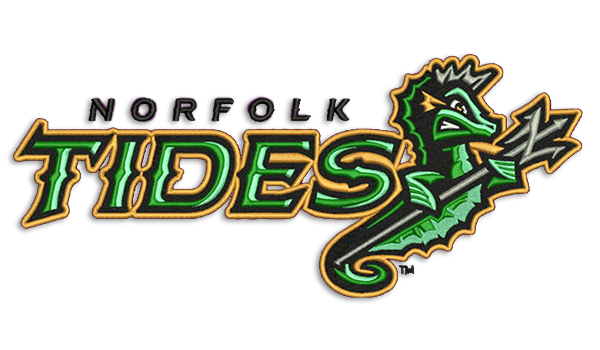Streamlining the Art of Needlework Digitizing: Step-by-Step Guide
Embroidery digitizing is a thorough craft that requires accuracy and creative thinking. As innovation remains to advance, the digitization procedure has actually become more easily accessible, permitting lovers to bring their elaborate styles to life with simplicity. In this overview, we will certainly unravel the intricacies of embroidery digitizing, damaging down each step carefully to streamline the procedure and equip both newbies and skilled embroiderers alike. Keep tuned to find just how you can simplify this complex art form and change your imaginative visions into wonderfully stitched work of arts.
Understanding Embroidery Digitizing Software Program
Embroidery digitizing software program functions as an essential tool for changing elaborate layouts right into digital styles suitable with embroidery devices, promoting specific stitching and modification. This specialized software application allows customers to import various photo data layouts, such as JPG or PNG, and transform them right into needlework machine-readable styles like DST, EXP, or PES - Digitizing for Embroidery. By using features like stitch editing, padding alternatives, and thread shade selection, digitizing software program makes it possible for customers to manage every facet of the style process
Additionally, progressed embroidery digitizing software supplies tools for creating complicated layouts, readjusting stitch thickness, and incorporating detailed information. Customers can likewise sneak peek the layout before stitching it out, making certain accuracy and reducing errors. Additionally, numerous software application programs supply automatic functions that help improve the digitizing process, conserving time and initiative.
Recognizing the capacities of needlework digitizing software program is essential for achieving top quality cause embroidery projects. By understanding this device, needlework fanatics and specialists can release their creative thinking and bring intricate designs to life with precision and efficiency.

Selecting the Right Style Data
After acquainting yourself with the capabilities of embroidery digitizing software program, the following critical action in the process is selecting the right design documents for your task. Digitizing for Embroidery. When picking a style data for embroidery digitizing, it's necessary to think about the complexity of the design, the dimension of the end product, and the kind of material you will be functioning with
For detailed designs with great information, a high-resolution picture or vector file is recommended to make sure that the embroidery device can properly replicate the style. In addition, the dimension of the end product plays a considerable duty in selecting the best style file. Bigger designs might need greater resolution data to maintain clearness and sharpness.
Moreover, the sort of textile you will be stitching on affects the choice of layout file. Different textiles may call for modifications in the design data to ensure that the stitches are appropriately lined up and the layout appears as planned. By thoroughly picking the ideal design data based on these variables, you can set on your own up for an effective embroidery digitizing procedure.
Digitizing Tools and Methods
Utilizing specialized software program and precision methods, digitizing tools are crucial in transforming detailed designs right into embroidery-ready data. Needlework digitizing software, such as Wilcom, Hatch, or Embrilliance, offers the needed system to transform artwork into stitch data. These programs provide functions like stitch editing and enhancing, padding alternatives, and lettering tools to make sure the design equates effortlessly onto textile.
One of the essential methods in digitizing is creating a clear course for the needlework equipment to adhere to. This entails digitizing each aspect of the layout with accuracy, identifying stitch kinds, thickness, and instructions. By making use of tools like digitizing tablet computers or software-specific plugins, embroiderers can achieve a high level of precision in their digitized layouts.
Moreover, understanding the art of rug sewing is critical for producing high quality embroidery. Underlay sewing maintains the textile and develops a structure for the style, making sure that the final product is both aesthetically attractive and lasting. By understanding these digitizing devices and methods, embroiderers can elevate their craft and bring intricate layouts to life with precision and efficiency.
Customizing Stitch Types and Instructions
The option of stitch types can substantially impact the general look and texture of the embroidered style. By tactically this content incorporating these stitch kinds, embroiderers can accomplish deepness and dimension in their layouts.
Additionally, the direction of stitches plays a critical role in improving the aesthetic appeal of the final embroidery. Varying stitch hop over to here instructions can include structure, highlight details components, and produce visual interest. For circumstances, altering the angle of stitches can mimic activity or natural patterns like fur or plumes. By trying out with various stitch angles and patterns, embroiderers can bring their designs to life with amazing information and details. Understanding the art of customizing stitch types and directions empowers embroiderers to unleash their creative thinking and raise the high quality of their job.
Screening and Refining Your Digitized Design
To make certain the precision and top quality of your digitized layout, thorough screening and improvement are crucial actions in the needlework digitizing procedure. When you have completed the digitization of your design, it is essential to evaluate it prior to proceeding with the actual embroidery. Checking enables you to determine any prospective concerns such as string breaks, stitch density problems, or style distortions that may impact the final outcome.

After screening, it is important to improve your digitized design based upon the comments from the test sew-out. This might involve tweaking sew settings, readjusting densities, or making changes to the total style to achieve the wanted result. By repeating via testing and improvement, you can fine-tune your digitized style to excellence prior to moving on with the real needlework process.
Conclusion
Finally, mastering the art of needlework digitizing requires a complete understanding of the software program, choosing the appropriate style file, utilizing digitizing tools and strategies, tailoring stitch kinds and instructions, and screening and refining the digitized layout. By complying with these steps, embroiderers can read streamline the digitizing procedure and develop high-quality embroidered designs with accuracy and effectiveness.
Comments on “Ideal Digitizing for Embroidery: Boost Your Tasks”